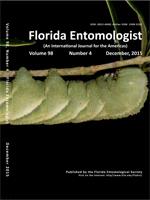Sample collections of Solenopsis invicta Buren (Hymenoptera: Formicidae) were taken from 20 islands of the West Indies and evaluated for the presence of key pathogens and parasites of this invasive pest ant. We hypothesized that bottleneck events during the introduction of this ant species in the West Indies would have resulted in populations devoid, or nearly so, of natural enemies. Monogyne and polygyne social forms were found throughout the islands surveyed with monogyny being more prevalent (65%) compared with polygyny (35%). Among 254 samples, only 25 (~10%) tested positive for the presence of pathogens or parasites. The microsporidian Kneallhazia solenopsae was the most prevalent pathogen detected; it was found in 20 colonies. A second microsporidian species, Vairimorpha invictae, was shown to be present in a polygyne sample collected from St. Croix—the first detection of this pathogen outside South America. Similarly, Solenopsis invicta densovirus (SiDNV) was detected in one polygyne sample from Anguilla. SiDNV is not found in S. invicta U.S. populations, so this detection also represents the first geographic discovery outside of South America. Two species of Pseudacteon decapitating flies were found to have dispersed into the Bahamas. Utilization of the islands of the West Indies for release, establishment, and impact assessment of S. invicta natural enemies is discussed.
How to translate text using browser tools
1 December 2015
The Red Imported Fire Ant (Hymenoptera: Formicidae) in the West Indies: Distribution of Natural Enemies and a Possible Test Bed for Release of Self-Sustaining Biocontrol Agents
Steven M. Valles,
James K. Wetterer,
Sanford D. Porter

Florida Entomologist
Vol. 98 • No. 4
December 2015
Vol. 98 • No. 4
December 2015
Kneallhazia solenopsae
parasite
parásitos
pathogen
patógenos
Pseudacteon
SiDNV




